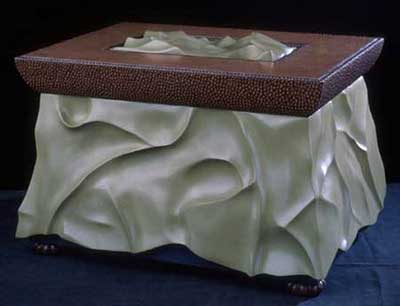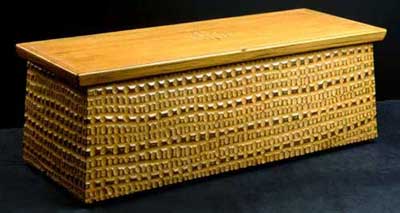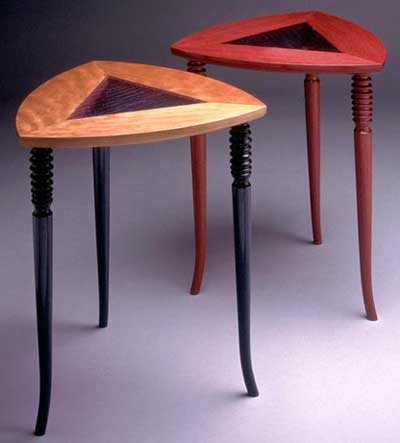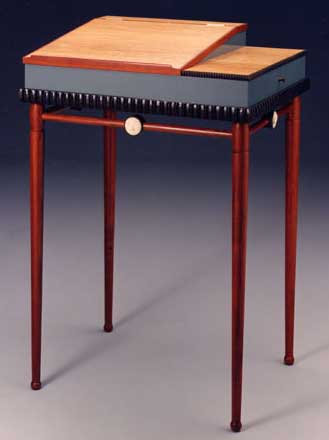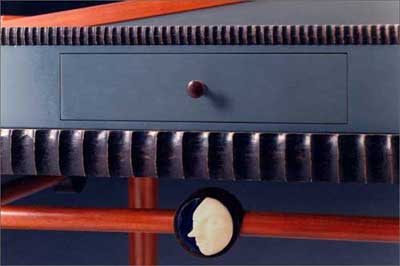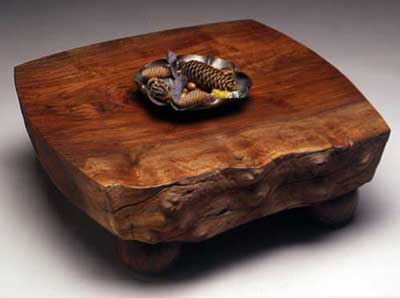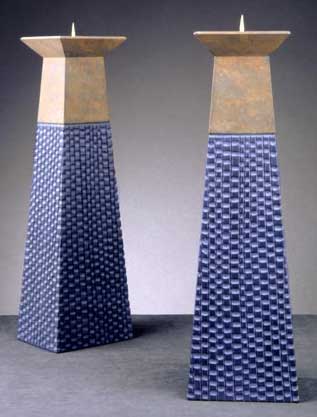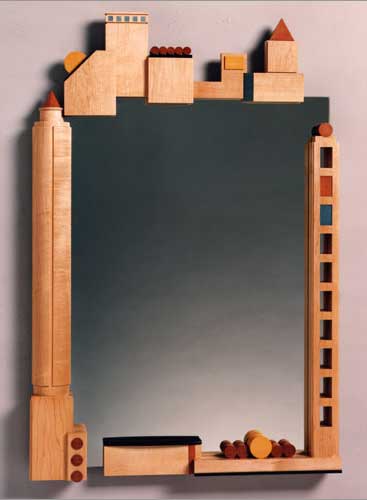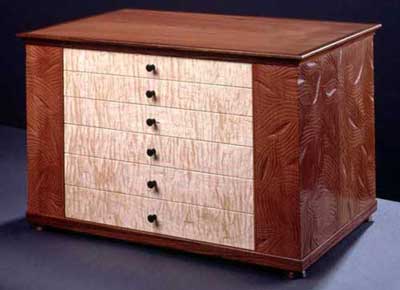
Michael Cullen has been doing some woodworking since he was a kid, building terrariums in his dad’s friend’s shop and taking shop classes in high school.
Still, when it was time for college and a career, he went into mechanical engineering, and found that his interests in engineering and art — and the classes he wanted to take in each discipline — struggled against each other.
It wasn’t until a few years later, when he was looking through some magazines at the library, that “a lightbulb clicked on,” Michael said. Articles on the work of furniture maker Judy McKie and the clocks of Wendell Castle helped him realize that, “This is art and engineering, all that stuff put together. I wanted to be a furniture maker.”
To improve his technical skills, he studied for two years with English furniture maker David Powell at Leeds Design Workshops in Easthampton, Massachusetts.
Michael eventually opened his own business, but says he does not characterize himself as a woodworker focused on a particular style of work. “I do my best on each piece, but it’s always leading into the next idea: ‘I could do this, I could do something different,’” he said.
For instance, while he loves Shaker work. “I’m not the kind of person who would want to dedicate my time to making the same stle over and over. I would go from that to probably something with complex veneer, or more handhewn.”
He does admit, though, to a fondness for his blanket chests. “I like the box form. You can bring carving all the way around them, and everybody’s curious about a box. You want to check out what’s inside the chest or box.”
Michael also enjoys carving. “Carving is probably my favorite thing in the world to do. It takes focus, but for me, it’s extremely relaxing.” In fact, he says he has to stop himself because carving can be hard on the hands – and “I can carve for 12 hours straight and be completely relaxed, I’m so connected with the work.”
Perhaps not surprisingly, then, one of his favorite pieces is his “Moon Desk” or “Peephole Desk” from 1991. Although Michael says he was still learning a lot of skills at that point, it was also one of the first pieces where he did a lot of carving, before realizing he would be following that path more and more, incorporating textures in his work. Plus, his wife made the cameos for the phases of the moon that appear on the desk.
He enjoys using mahogany wood, not necessarily for its look, “but for the way it works. Mahogany, Michael said, can carve with or against the grain without chipping out. He also works in woods like California walnut and madrone, and contends that he has seen a variance in attitude toward wood between the East Coast, where he studied furniture making, and the West Coast, where he now lives and works.
On the West Coast, he said, trees used by woodworkers are much more likely to be “a tree you actually saw standing, that you milled up by hand or that was milled by a sawyer you know.”
He says the beauty of the wood adds to the appeal of elemental pieces — but “at some point it can become all about the wood. I try to keep it under control.”
Michael doesn’t have to worry about keeeping tool lust under control: that’s not the part of woodworking that appeals to him. “The process with machines, I can’t wait till I get past that stuff with the table saw and the joiner. The only one really fun to work at is the lathe.”
Right now, in fact, he’s learning how to use an adze, and he recalls that, “As a young kid, I could go off and ride a bike, and take a piece of wood with me and a pocket knife. With those two things, I could make something useful. A lot of that is still true.
“You can have fancy tools and a huge workshop, or you can have a saw, hand planes and chisels, and you could make anything with those. There’s no real limitations on what you can make, or what level you can bring it to.”
For Michael, that’s part of the appeal of woodworking, along with the way it combines two of his interests. “Engineering and art are always trying to vie with each other. [Engineering requires] precision: your miter joints, to make sure a chair stands on all four legs. The art side wants to make sure things are beautiful and attractive to look at.
“Woodworking is both.”
